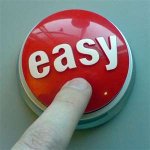Hello All,
How do you determine the cmyk value for a Pantone.
I have a customer that wanted to make some last minute color changes to their files. They supply pantone numbers knowing we would have to convert them to CMYK values. We convert the Pantone values in Indesign CS5. When we got to press, the customer pulls out his pantone swatches and the printed piece is not close to the swathes. I know you will not get an exact match, but some of these were way off.
So, what has worked for you in the past?
Thanks!
How do you determine the cmyk value for a Pantone.
I have a customer that wanted to make some last minute color changes to their files. They supply pantone numbers knowing we would have to convert them to CMYK values. We convert the Pantone values in Indesign CS5. When we got to press, the customer pulls out his pantone swatches and the printed piece is not close to the swathes. I know you will not get an exact match, but some of these were way off.
So, what has worked for you in the past?
Thanks!














